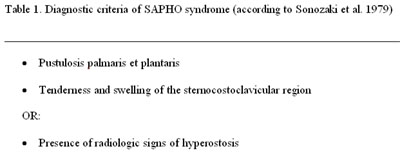LA TUBERCULOSIS ES UN DIAGNOSTICO DIFERENCIAL DEL SINDROME SAPHO
Se presenta un caso clínico de tuberculosis pulmonar y extrapulmonar cuya presentación clínica fue similar a la del síndrome SAPHO. Se destaca la necesidad de incluir a la tuberculosis como un diagnóstico diferencial de esta afección, en especial en los pacientes procedentes de áreas endémicas.
Institución del autor
Academic Teaching Hospital Dresden-Friedrichstadt, Dresden, Alemania
Coautores
L Unger* S Wollschläger* M Prinz* T Kittner*
Academic Teaching Hospital Dresden-Friedrichstadt, Dresden, Alemania*
Primera edición en siicsalud
5 de agosto, 2011

















